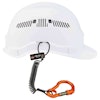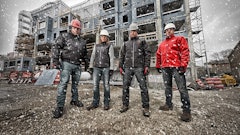
I’ll admit, I have zero experience in engineering. Basically all I know about it is there is a lot of math involved! But since joining the construction industry as a journalist 11 years ago, I’ve found myself learning many new things I knew nothing about before.
ForConstructionPros.com’s content doesn’t cover much about engineering. But recently I came across a newly published book called Built: The Hidden Stories Behind Our Structures, by Roma Agrawal. And I got curious. So I picked up a copy of the book to see how the content might be of interest to construction contractors.
Most of you probably aren’t engineers and may not know everything that is involved in the structural engineering of a building. However, many of you have probably collaborated or interacted with structural engineers. Have you ever taken the time to understand what their job is and how it co-exists with construction?
Just pages into this book, I was intrigued by all the new information the author was sharing. I’m not a construction contractor, so I don’t know all the intricacies of building with beams, columns, trusses, etc. Do you?
If you’ve been in the industry for a while you’re probably more educated on all the materials you build with (hopefully). But newcomers to the industry may not be. As I started to read this book, I began to think it could be a good extracurricular read for workers new to the industry, especially those that don’t have an engineering or construction background or experience.
It never hurts to have a thorough understanding of the materials we work with and how our structures are engineered to survive against all the challenges our environment throws at them.
This book is by no means an educational text book designed to teach or train new construction workers. I think, however, that it offers some good introductory knowledge that is a little more engaging than most textbooks would be.
And if you’ve been in the industry for a while, it never hurts to brush up on the behind the scenes of our built environment. Outside of writing, I have a background in dance. One of the things you often hear about good dancers is they know the importance of brushing up and continuing to work on the basics learned at the very beginning of their career.
I think that mindset can apply for contractors as well. As contractors advance in their careers they should remember the importance of understanding the foundation of building principles. Even if you aren’t the one designing the building, you are responsible for building it, working with the materials and executing the requirements of the structural engineer and architect. It’s beneficial (and important) to understand why you are building the way you are.
Not only does this book offer some educational insight, but it gives readers the chance to take a look at historical and current structures and how they were built. Have you ever looked at an iconic building, bridge, etc. and thought, “I wonder how they built that?” For all of us who did not have any hand in building these structures it’s fun to get a closer look at them from a structural engineer’s perspective.
My conclusion? I think this book is well worth the read and the time both as an educational resource and as a fun perspective to remind us all why we’re in this industry and all the careful thought and historical knowledge that helps us build what we do today and what we will build in the future.
If you take my advice and read the book, let us know your thoughts. Would you consider asking your employees or coworkers to read this book? Do you think this book is more of a “fun” read for people not involved in the construction industry? We’d love to hear your opinions.




















